import numpy as np
a = np.array([1,2,3])
b = np.array([4,5,6])
print(“a:”,a)
print(“b:”,b)
tup=(a,b)
vstack = np.vstack(tup)
hstack = np.hstack(tup)
print(“vstack(a,b):\n”,np.vstack( tup ) ,type(vstack) )
print(“hstack(a,b):\n”,np.hstack( tup ) ,type(hstack) )
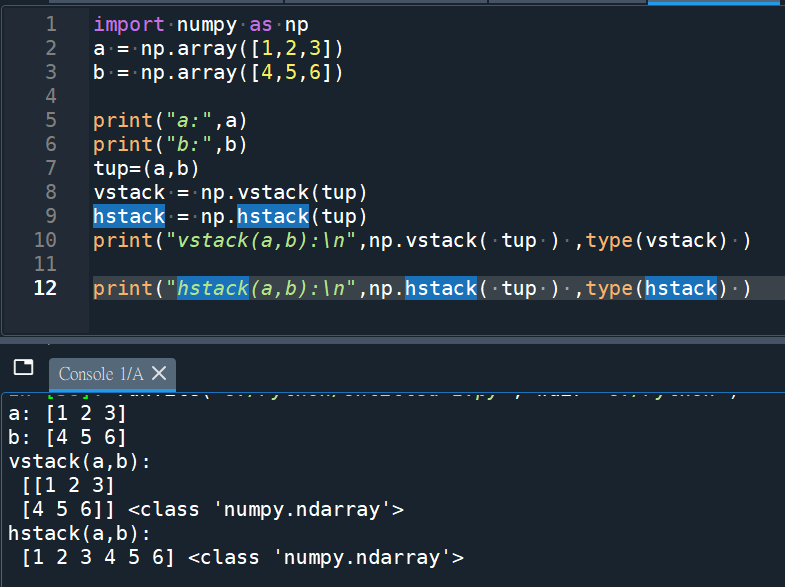
2D array的水平/垂直堆疊:
import numpy as np
alst2D=[
[1,2,3],
[3,2,1]
]
blst2D=[
[4,5,6],
[6,5,4]
]
a = np.array(alst2D)
b = np.array(blst2D)
print(“array a:\n”,a)
print(“array b:\n”,b)
tup=(a,b)
vstack = np.vstack(tup)
hstack = np.hstack(tup)
print(“vstack(a,b):\n”,np.vstack( tup ) ,type(vstack) )
print(“hstack(a,b):\n”,np.hstack( tup ) ,type(hstack) )
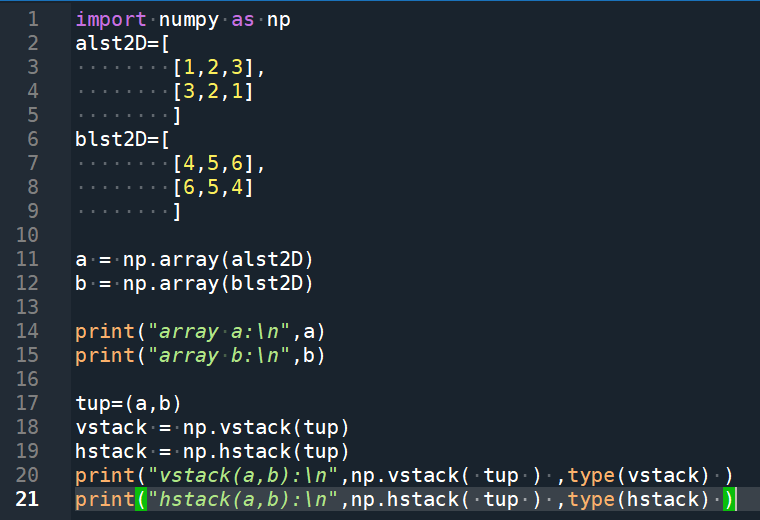
輸出結果:
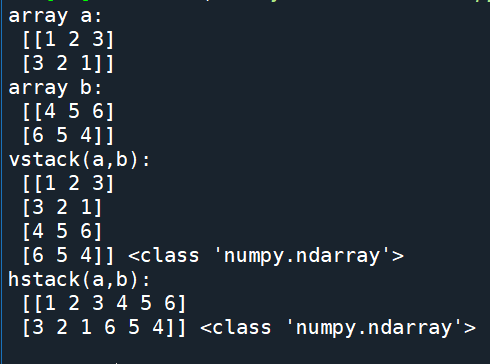
import numpy as np
Delay = np.linspace(1e-6,1e-4,5)
print(“Delay: \n”,Delay)
DelayAry = np.array(Delay)*2.048*10**9
print(“DelayAry:\n”,DelayAry)
Delay_f = np.uint16( np.floor(DelayAry/2**16))
Delay_s = np.uint16( np.mod(DelayAry,2**16) )
print(“Delay_f & Delay_s: \n”,Delay_f)
print(Delay_s)
Delay_vstack = np.vstack( (Delay_f,Delay_s) )
print(“vstack: \n”,Delay_vstack)
Delay_ravel = Delay_vstack.ravel(“F”).tolist()
#.tolist()將array轉為list
print(“ravel(‘F’): \n”,Delay_ravel)
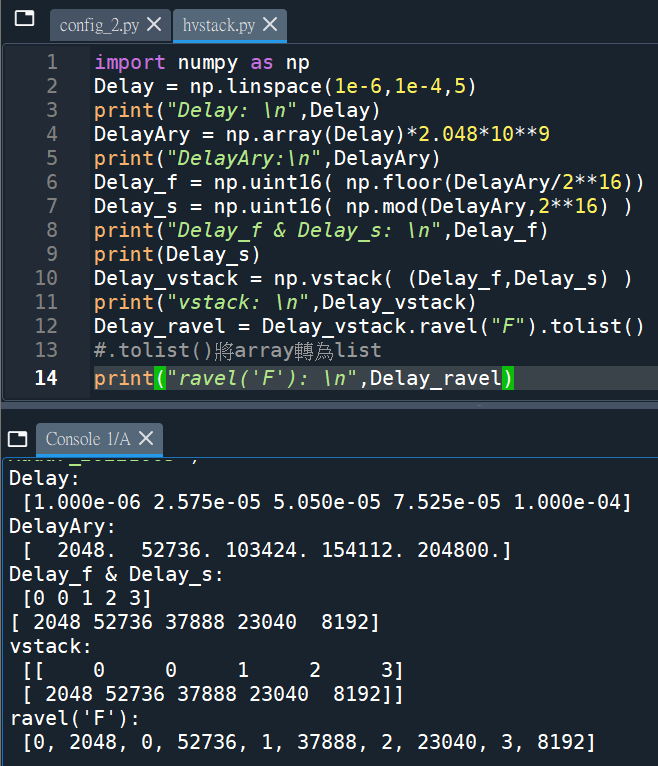
推薦hahow線上學習python: https://igrape.net/30afN

![Python: 資料格式如 List[dict],如何快速將SN加入每一個dict中,以利Excel輸出?如何解包dict? **dict ; 將List[dict]的資料轉為pandas.DataFrame 長什麼樣子? Python: 資料格式如 List[dict],如何快速將SN加入每一個dict中,以利Excel輸出?如何解包dict? **dict ; 將List[dict]的資料轉為pandas.DataFrame 長什麼樣子?](https://i0.wp.com/savingking.com.tw/wp-content/uploads/2024/02/20240208093926_0.png?quality=90&zoom=2&ssl=1&resize=350%2C233)







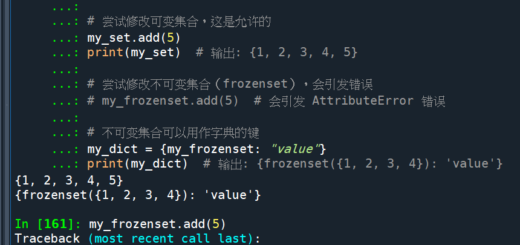
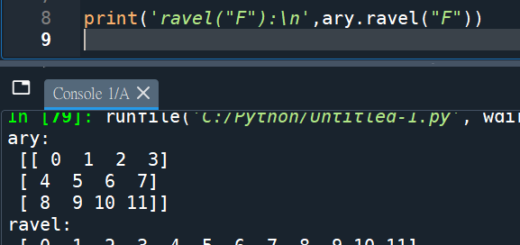


近期留言